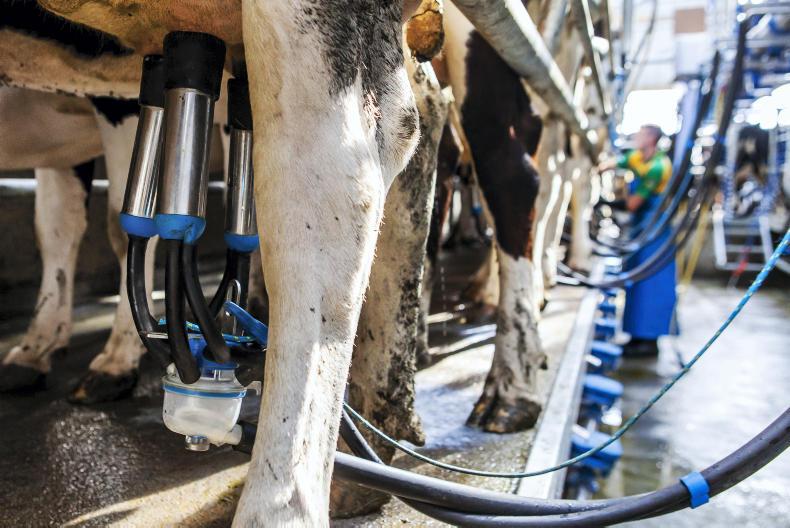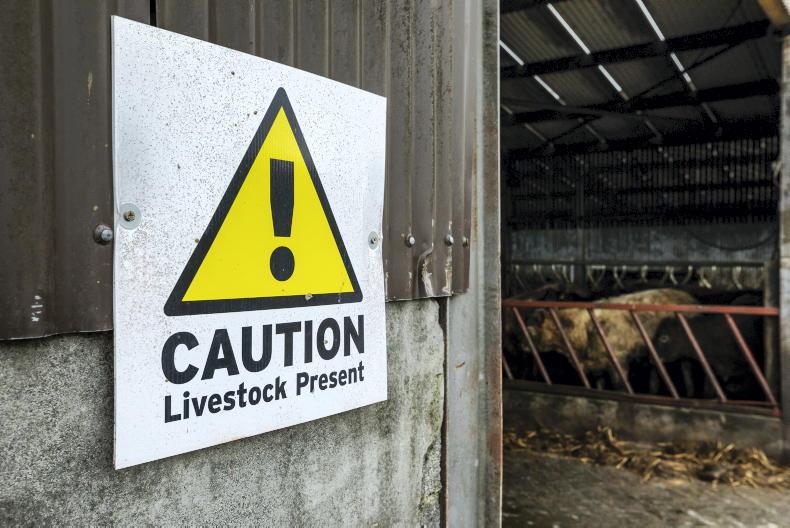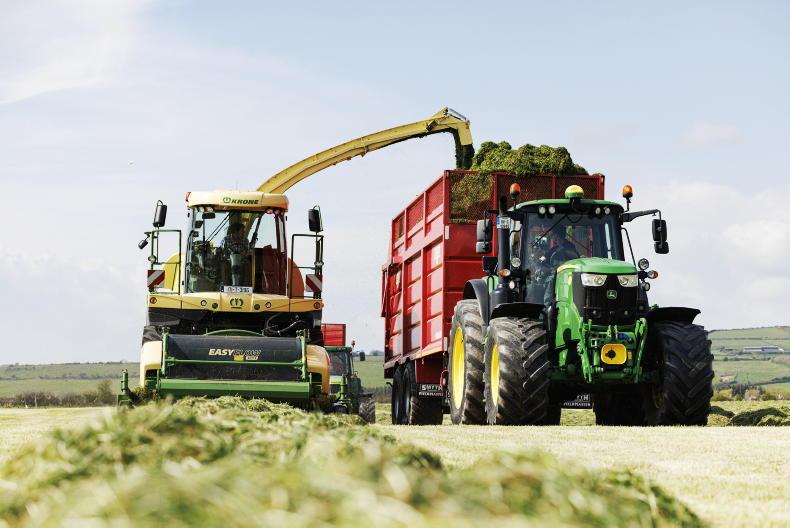Have you heard the story about boiling an egg? You could try to do it one of two ways; fill the pot with boiling water and throw the egg in, or place the egg in the pot and slowly turn up the heat. You can imagine what happens if you throw the egg into boiling water – you risk breaking the shell and poaching the egg. On the other hand, the slow, gradual increase in heat will probably boil the egg properly.
You could ask, legitimately, what this story has to do with milking cows, but I think it is a good metaphor for many things in farming. While milking cows is not a particularly dangerous job, like the egg in the pot you can do it properly and succeed or wrongly and suffer. The biggest risk with milking is wear and tear on joints and limbs.
Dairy farmers with shoulder injuries are keeping the orthopaedic wards of private hospitals open. And it’s not all elderly farmers in them. As herd sizes increase, farmers are attaching more clusters. New parlours speed up milking times, but the clusters still need to be attached. If the clusters are being attached incorrectly, then the wear and tear on joints increases.
Padraig O’Connor is a milking expert with Teagasc. He says that based on 3kg cluster weights, and milking 100 cows six days a week, a dairy farmer is lifting 3.6t each week.
If the clusters are being lifted by one hand and attached by another hand, with the same hands used each time, then there is huge weight being put on the same side of the body.
“All that weight is put on one arm and on one side of the body. If we asked a machine to do that, it would be banjaxed in no time,” Padraig says.
Hands
He is encouraging farmers to swap hands when attaching clusters. When putting on clusters on the left side of the parlour (facing the front), he says the cluster should be held by your right hand and attached with your left hand.
When putting on clusters on the right side, the cluster should be held by your left hand and attached by your right hand.
At all times, the cluster is attached by the arm closest to the cow. This prevents reaching across to attach the clusters and putting extra strain on your shoulders and lower back. It also means that the cluster is being held closer to your body and the centre of gravity.
Training farmers to attach clusters the correct way is a big challenge for Padraig, but he says farmers are attaching them right on one side of the parlour, so they only really need to train themselves for the other side of the parlour.
The key message is; if milking or boiling eggs there is a proper way to do it – learn how to attach clusters the correct way.
Other risks
Kicks from cows and trips and falls continue to be the most common injuries while milking cows. Wet surfaces, combined with trip hazards such as pipes and hoses on the ground, are the reason for the high risks in milking parlours and dairies. Adopting lean principles can make milking parlours safer places to work. The principles of lean – “a place for everything and everything in its place” will reduce risks.
Unfortunately, it’s not as easy to reduce the risks of getting a kick from a cow.
Awareness
Awareness of the risks is the first act of defence. Don’t ever put your body between a cow and the rails. This is where most injuries happen. That is easier said than done when trying to attach clusters on to awkward, jumpy heifers in the middle of February, but that’s when accidents happen.
By their nature, milking parlours and dairies are wet places. They also have lots of electrical appliances. This is a risk, particularly in older parlours where wiring may not be as good as recently installed parlours.
Make sure that all electrical connections are waterproof and splash waterproof. Always ensure that electrical equipment has the correct type of protective enclosure as indicated by its IP rating.
Read more
Double trouble in Tipperary
Polytunnel housing for calves
Have you heard the story about boiling an egg? You could try to do it one of two ways; fill the pot with boiling water and throw the egg in, or place the egg in the pot and slowly turn up the heat. You can imagine what happens if you throw the egg into boiling water – you risk breaking the shell and poaching the egg. On the other hand, the slow, gradual increase in heat will probably boil the egg properly.
You could ask, legitimately, what this story has to do with milking cows, but I think it is a good metaphor for many things in farming. While milking cows is not a particularly dangerous job, like the egg in the pot you can do it properly and succeed or wrongly and suffer. The biggest risk with milking is wear and tear on joints and limbs.
Dairy farmers with shoulder injuries are keeping the orthopaedic wards of private hospitals open. And it’s not all elderly farmers in them. As herd sizes increase, farmers are attaching more clusters. New parlours speed up milking times, but the clusters still need to be attached. If the clusters are being attached incorrectly, then the wear and tear on joints increases.
Padraig O’Connor is a milking expert with Teagasc. He says that based on 3kg cluster weights, and milking 100 cows six days a week, a dairy farmer is lifting 3.6t each week.
If the clusters are being lifted by one hand and attached by another hand, with the same hands used each time, then there is huge weight being put on the same side of the body.
“All that weight is put on one arm and on one side of the body. If we asked a machine to do that, it would be banjaxed in no time,” Padraig says.
Hands
He is encouraging farmers to swap hands when attaching clusters. When putting on clusters on the left side of the parlour (facing the front), he says the cluster should be held by your right hand and attached with your left hand.
When putting on clusters on the right side, the cluster should be held by your left hand and attached by your right hand.
At all times, the cluster is attached by the arm closest to the cow. This prevents reaching across to attach the clusters and putting extra strain on your shoulders and lower back. It also means that the cluster is being held closer to your body and the centre of gravity.
Training farmers to attach clusters the correct way is a big challenge for Padraig, but he says farmers are attaching them right on one side of the parlour, so they only really need to train themselves for the other side of the parlour.
The key message is; if milking or boiling eggs there is a proper way to do it – learn how to attach clusters the correct way.
Other risks
Kicks from cows and trips and falls continue to be the most common injuries while milking cows. Wet surfaces, combined with trip hazards such as pipes and hoses on the ground, are the reason for the high risks in milking parlours and dairies. Adopting lean principles can make milking parlours safer places to work. The principles of lean – “a place for everything and everything in its place” will reduce risks.
Unfortunately, it’s not as easy to reduce the risks of getting a kick from a cow.
Awareness
Awareness of the risks is the first act of defence. Don’t ever put your body between a cow and the rails. This is where most injuries happen. That is easier said than done when trying to attach clusters on to awkward, jumpy heifers in the middle of February, but that’s when accidents happen.
By their nature, milking parlours and dairies are wet places. They also have lots of electrical appliances. This is a risk, particularly in older parlours where wiring may not be as good as recently installed parlours.
Make sure that all electrical connections are waterproof and splash waterproof. Always ensure that electrical equipment has the correct type of protective enclosure as indicated by its IP rating.
Read more
Double trouble in Tipperary
Polytunnel housing for calves









SHARING OPTIONS